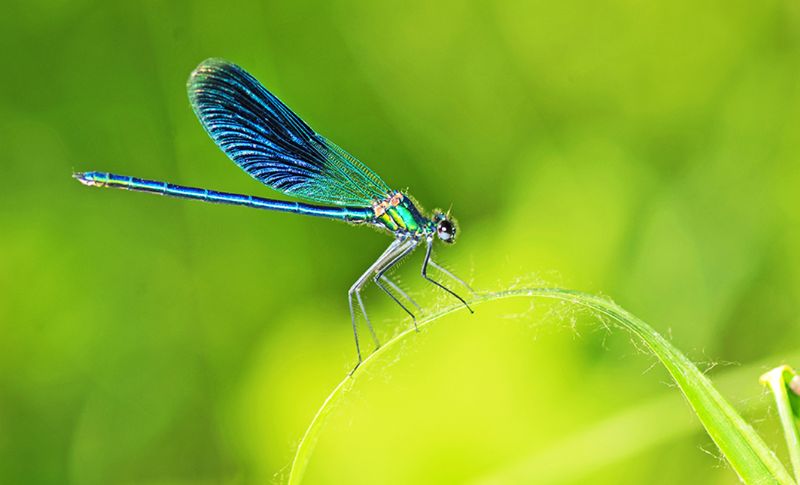- Home
- News, Articles & Reviews
We are hiring! Please click here to join our growing magazine delivery team in Gloucestershire!
Areas
Pets & Wildlife
Archive

Insect acrobats of the skies
All Areas > Pets & Wildlife > Wildlife Matters
Author: Caroline Shelley, Posted: Thursday, 24th August 2017, 08:00
As the nights begin to draw in and the children return to school, autumn is definitely in the air. Many summer insects though will still be about making the most of the last of the warm sun, and if you are near water then you may well hear the buzz of the dragonfly.
Dragonflies are fascinating creatures. They have an appearance that is beautiful and slightly creepy in equal measure. They come in an array of colours and have two pairs of transparent wings that shimmer in the sunlight, as well as six spider-like legs and two huge, alien like eyes. The UK’s longest dragonfly species is the golden-ringed dragonfly, which has stripes much like a wasp and makes quite a noisy hum due to its size but, like all dragonflies, it is harmless as long as you are not a small insect!
Dragonflies can be split into two sub-groups: dragonflies and damselflies. Damselflies are smaller and slighter. They stay around water and when not in flight they rest their wings along their body. Their eyes are positioned on each side of their head. Dragonflies meanwhile are larger and stronger fliers so can be found further from water. They rest with their wings open and their eyes are very close together, sometimes even touching.
These insects hung out with the dinosaurs!
Dragonflies have been around for millions of years and they haven’t changed much in that time, although pre-historic dragonflies had much larger wingspans. It’s testament to what amazing insects they are that they have been on earth so long, and it’s a great way to get the kids interested by telling them that these insects hung out with the dinosaurs!
The life cycle of the dragonfly starts when the female lays eggs either on the water’s surface or into plant material. The eggs hatch into nymphs that live under the water where they eat live prey and moult their skin 5-14 times before they are fully grown. The nymph, on average, spends one to two years developing under the water. When temperature and daylight hours are right, the nymph crawls up vegetation and the miracle of emergence occurs.
It takes a couple of weeks for a dragonfly to fully mature, during which time they develop their flying skills. It is worth taking time to watch a dragonfly in flight as they are amazing fliers – they even fly backwards! The mature adult will then mate, which is done as they fly in tandem.
Many of our dragonflies are considered rare. They are suffering a loss of habitat and are sensitive to climate change. The garden pond can help as long as it is a wildlife pond, as fish prey on dragonfly nymphs. Something else we can all do to help is to purchase peat-free compost, as peat bogs provide a habitat for dragonflies.
So keep an eye out for these amazing insects. If we are lucky with warm weather there is a chance to watch them in action before the temperatures drop. Soak in those last rays of late summer sunshine and admire the insect acrobats of the sky – maybe you’ll even catch one flying backwards.Other Images
Copyright © 2024 The Local Answer Limited.
Unauthorized use and/or duplication of this material without express and written permission from this site's author and/or owner is strictly prohibited. Excerpts and links may be used, provided that full and clear credit is given to The Local Answer Limited and thelocalanswer.co.uk with appropriate and specific direction to the original content.More articles you may be interested in...


© 2024 The Local Answer Limited - Registered in England and Wales - Company No. 06929408
Unit H, Churchill Industrial Estate, Churchill Road, Leckhampton, Cheltenham, GL53 7EG - VAT Registration No. 975613000You are leaving the TLA website...
You are now leaving the TLA website and are going to a website that is not operated by us. The Local Answer are not responsible for the content or availability of linked sites, and cannot accept liability if the linked site has been compromised and contains unsuitable images or other content. If you wish to proceed, please click the "Continue" button below:




